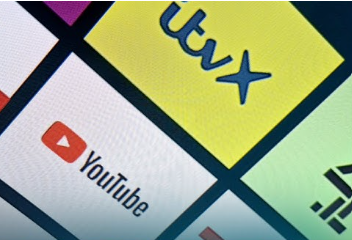Can media measurement evolve to truly capture cross-media reach in a fair and equitable way?
Current and future leaders in media came together last week to debate and challenge the status quo at the Future of Media conference.
For me, one of the really interesting debates focused on media measurement - an area of significant & constant change. Media agencies and advertisers have been puzzling for some time on a unified approach to cross-device and cross-media measurement. As media planners, we want a tool that enables us to understand net campaign reach and frequency, in particular the ability to unite traditional TV with the plethora of digital channels that now exist. If only there was a simple solution to this!
ISBA, in conjunction with Kantar and Accenture, are now onto the third phase of Origin, the cross-media measurement initiative. This aims to bring uniformity to the way we measure media, particularly broadcaster TV and digital display and video. However, whilst the project has received backing from over 40 organisations (including big advertiser brands, media agency groups and the likes of Google, Meta and TikTok), the UK’s biggest commercial broadcasters, ITV, SKY and Channel 4 are absent from the mix. Why is this?
The major commercial broadcasters have expressed concerns about how measurement of TV ad audiences can be compared in a fair manner with video views on digital platforms such as YouTube and Facebook. It’s certainly a complex picture. Almost every platform has a range of different metrics. For example, some platforms count a video view as three seconds, others count a view as soon as users open a video. Some platforms play videos with sound-off. Some videos will be viewed on mobile, others on a big screen. Some views are counted despite only having 50% ad viewability. With so many different standards, a view on one platform isn’t necessarily as valuable as a view on another one. It’s easy to understand why the TV companies have concerns. TV audiences have been measured independently by BARB since 1981, whereas tech platforms’ have lacked the impartiality of third-party measurement.
But are TV broadcasters right to be opting out of Origin?
In the Broadcasters defence, they have been making inroads to improve measurement. C-Flight (the UK’s first unified TV advertising metric that captures the majority of live, on-demand and time-shifted commercial impacts and impressions across all viewing platforms) is providing valuable data on combined linear and broadcaster VOD viewing – albeit post campaign. But it doesn’t really go far enough to answer the full question. We need to understand how broadcaster TV compares with YouTube, Facebook and other network video and CTV channels.
So how do we evaluate the value of an advertising impact on TV versus Digital fairly?
There are three key areas that feed into this: Audience, Attention and Attribution.
We not only need to understand who is present and actively watching, but what their level of attention or engagement is. The ability to delve deeper and to connect more data is important, if we want to link viewing data to attitudes and consumer behaviour and be able to understand the context of impacts served. There is a need to dedupe devices, especially as we connect more data in future, including gaming, podcasts, CTV etc.
Attention is currently being heralded as a proxy for quality in terms of ad views – and we know from Lumen research and other studies that there is a strong correlation between attention and awareness. But if low attention is less valuable, then by how much? Some studies suggest that low attention can still be highly effective from consumers absorbing messages in a more passive, subliminal way. There is still an inherent value to those opportunities. What about other effectiveness factors that we know are also at play - trust, emotion and creative standards for example?
So what’s the answer?
There is no denying that the industry is facing a massive measurement challenge and there is no simple unified solution at present. In fact, we need to be wary about simply layering up multiple data points and condensing them into a single metric. The solution is not to reduce everything to the lowest common denominator. As media planners, we need to consider the different metrics and continue to make informed decisions about the value of opportunities.
Until Origin becomes available in 2024, BARB TV data will remain invaluable, particularly as Netflix and Disney+ have just signed up. Through Lumen, we can now calculate an ‘attentive cost per seconds viewed’ across TV and digital channels. It’s not perfect, but it does offer some levelling of the playing field to assess the effectiveness of broadcaster TV versus digital platforms.
The only way we can truly understand the relative value of one channel or type of impact versus another is through testing. There needs to be real consensus around what campaign success looks like and more time spent defining KPIs and outcome targets and using attribution techniques to understand response. This is particularly important when we want to understand not only the short-term impact of media, but the effect it has on long-term brand health drivers. This is where brand research and econometrics can help us evaluate the bigger picture and help us navigate this increasingly complex AV media landscape.





